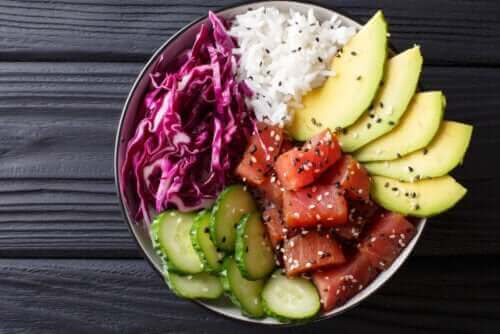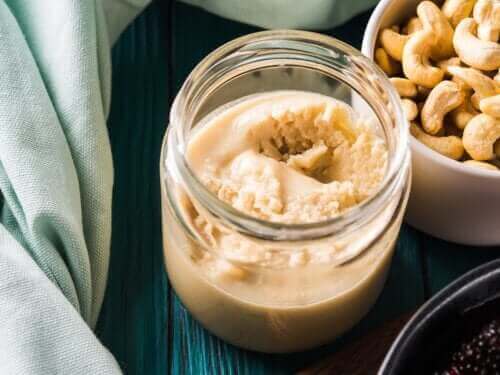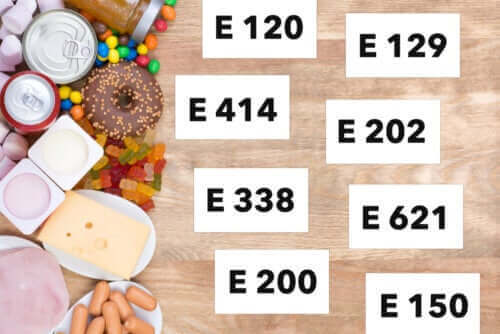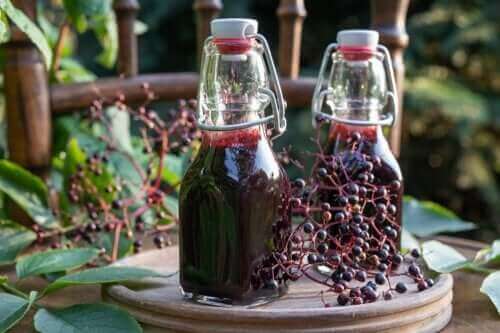五種控制血糖的飲品
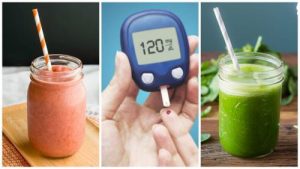
這些奶昔含有豐富的纖維、抗氧化劑和必需脂肪酸,而且,最重要的是它們還可以幫助你控制血糖!
血糖是當你不能產生足夠的胰島素時身體的反應之一。當你有胰島素抗體時也會發生這種情況。胰腺是負責釋放這種激素的器官,雖然它會自然地做到這一點,但有時它需要外界的幫助來對抗它所存在的一些問題。
這可能是因為遺傳的問題。不過,也有可能是由於不良的飲食習慣、肥胖和久坐不動而導致。
問題是許多人忽視了糖尿病對他們身體的影響,畢竟,它在初期階段通常不會有太強烈的症狀。最嚴重的是,隨著時間的流逝,它會影響你身體中的其他系統,這會導致心血管、認知甚至腎臟的問題。
幸運的是,這是一種可以用天然的方法治療的問題,如果你養成了健康的飲食習慣,吃那些有助於你身體的食物,你就能戰勝它。
在這篇文章中,我們想分享五種自製奶昔,它們對解決這一問題有很大的幫助。
快來試一試吧!
1. 柳橙、藍莓和生薑奶昔
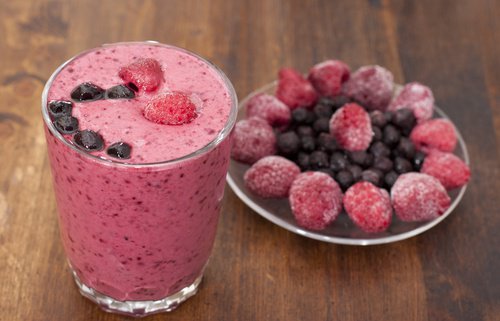
這種美味的奶昔含有豐富的抗氧化成份,有助於穩定你的血糖指數。
它們的營養可以優化你的胰腺功能,還能幫助你的身體正確地運用胰島素。
材料
- 2 顆柳橙
- 1/2 杯藍莓
- 1 湯匙剁碎的薑
- 1/2 杯豆奶
步驟
- 把2顆柳橙榨成汁,然後,在攪拌器中加入藍莓、生薑和豆奶一起攪拌。
- 攪拌均勻,直到裡面沒有結塊。
- 早餐和下午的時候飲用。
2.木瓜草莓奶昔
這款好喝的奶昔中的酶對加速新陳代謝有很大的幫助,而且,它在胰腺中的作用有助於控制血糖。
它的維生素和礦物質增加了調節血糖的過程,同時,它還能促進排毒。
材料
- 3 片木瓜
- 6 顆熟草莓
- 5 湯匙天然優格
- 1/2 杯水
步驟
- 將所有材料倒入攪拌器中,攪拌幾分鐘直至均勻。
- 早上的時候喝,或者作為早餐的一部份飲用。
- 每週喝三次。
3. 菠菜和黃瓜汁
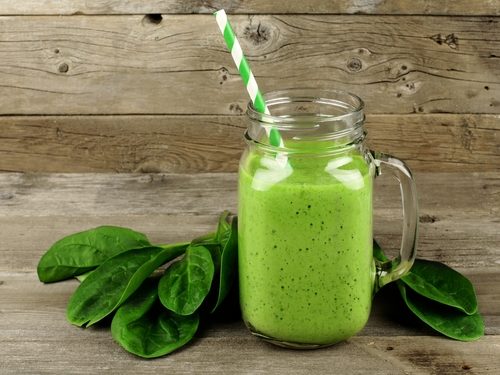
這款綠色飲料中的抗氧化劑和纖維對降低血糖有很大的幫助,還有助於解決膽固醇和高血壓等問題。
喝它能促進排毒,還可以減少炎症。
材料
- 6 片菠菜葉
- 1/2 根黃瓜
- 1 顆青蘋果
- 1 杯水
步驟
- 把所有材料都清洗乾淨,然後,切碎讓它們更好地攪拌。
- 切好後,把它們倒入攪拌器中,加入水之後開始攪拌。
- 攪拌均勻,早上飲用。
- 每週喝2到3次。
4. 蕃茄、歐芹和橄欖油奶昔
這款奶昔含有豐富的抗氧化劑、纖維以及必需脂肪酸,這非常有益於控制血糖。
經常飲用還可以降低患糖尿病的風險,並有助於緩解血液循環問題。
材料
- 3 個蕃茄
- 3 根歐芹梗
- 1 湯匙橄欖油
- 1 顆青蘋果
- 1/2 杯水
步驟
- 把所有材料都洗乾淨並切碎,然後,倒入攪拌器中。
- 攪拌均勻。
- 馬上飲用,儘快喝完。
- 每週三次,早餐的時候喝。
5. 奇異果、蘋果和菠菜奶昔
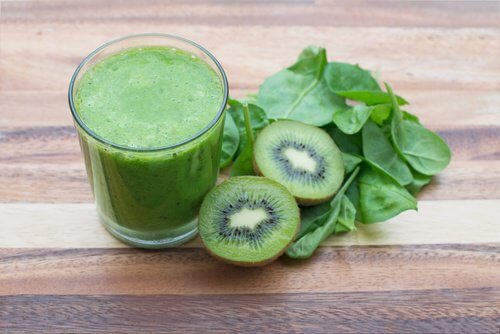
這款奶昔融合了富含纖維、抗氧化劑和基本維生素的蔬果,它們有助於控制血糖。吸收這些營養還有助於消化和消炎,它還能激活代謝功能以及預防糖尿病。
材料
- 4 熟奇異果
- 2 顆青蘋果
- 6 菠菜葉
- 3 杯水
步驟
- 奇異果去皮,蘋果和菠菜洗淨,然後,把所有的配料倒入攪拌器中,攪拌均勻。
- 攪拌直到順滑的濃稠度即可。
- 分為三份,在一天中喝完。
- 每週喝2到3次。
你是否有控制血糖上的困擾?有的話,就做一杯這樣的飲料吧,把它添加到你日常的飲食中作為一種預防治療。
這些奶昔含有豐富的纖維、抗氧化劑和必需脂肪酸,而且,最重要的是它們還可以幫助你控制血糖!
血糖是當你不能產生足夠的胰島素時身體的反應之一。當你有胰島素抗體時也會發生這種情況。胰腺是負責釋放這種激素的器官,雖然它會自然地做到這一點,但有時它需要外界的幫助來對抗它所存在的一些問題。
這可能是因為遺傳的問題。不過,也有可能是由於不良的飲食習慣、肥胖和久坐不動而導致。
問題是許多人忽視了糖尿病對他們身體的影響,畢竟,它在初期階段通常不會有太強烈的症狀。最嚴重的是,隨著時間的流逝,它會影響你身體中的其他系統,這會導致心血管、認知甚至腎臟的問題。
幸運的是,這是一種可以用天然的方法治療的問題,如果你養成了健康的飲食習慣,吃那些有助於你身體的食物,你就能戰勝它。
在這篇文章中,我們想分享五種自製奶昔,它們對解決這一問題有很大的幫助。
快來試一試吧!
1. 柳橙、藍莓和生薑奶昔

這種美味的奶昔含有豐富的抗氧化成份,有助於穩定你的血糖指數。
它們的營養可以優化你的胰腺功能,還能幫助你的身體正確地運用胰島素。
材料
- 2 顆柳橙
- 1/2 杯藍莓
- 1 湯匙剁碎的薑
- 1/2 杯豆奶
步驟
- 把2顆柳橙榨成汁,然後,在攪拌器中加入藍莓、生薑和豆奶一起攪拌。
- 攪拌均勻,直到裡面沒有結塊。
- 早餐和下午的時候飲用。
2.木瓜草莓奶昔
這款好喝的奶昔中的酶對加速新陳代謝有很大的幫助,而且,它在胰腺中的作用有助於控制血糖。
它的維生素和礦物質增加了調節血糖的過程,同時,它還能促進排毒。
材料
- 3 片木瓜
- 6 顆熟草莓
- 5 湯匙天然優格
- 1/2 杯水
步驟
- 將所有材料倒入攪拌器中,攪拌幾分鐘直至均勻。
- 早上的時候喝,或者作為早餐的一部份飲用。
- 每週喝三次。
3. 菠菜和黃瓜汁

這款綠色飲料中的抗氧化劑和纖維對降低血糖有很大的幫助,還有助於解決膽固醇和高血壓等問題。
喝它能促進排毒,還可以減少炎症。
材料
- 6 片菠菜葉
- 1/2 根黃瓜
- 1 顆青蘋果
- 1 杯水
步驟
- 把所有材料都清洗乾淨,然後,切碎讓它們更好地攪拌。
- 切好後,把它們倒入攪拌器中,加入水之後開始攪拌。
- 攪拌均勻,早上飲用。
- 每週喝2到3次。
4. 蕃茄、歐芹和橄欖油奶昔
這款奶昔含有豐富的抗氧化劑、纖維以及必需脂肪酸,這非常有益於控制血糖。
經常飲用還可以降低患糖尿病的風險,並有助於緩解血液循環問題。
材料
- 3 個蕃茄
- 3 根歐芹梗
- 1 湯匙橄欖油
- 1 顆青蘋果
- 1/2 杯水
步驟
- 把所有材料都洗乾淨並切碎,然後,倒入攪拌器中。
- 攪拌均勻。
- 馬上飲用,儘快喝完。
- 每週三次,早餐的時候喝。
5. 奇異果、蘋果和菠菜奶昔

這款奶昔融合了富含纖維、抗氧化劑和基本維生素的蔬果,它們有助於控制血糖。吸收這些營養還有助於消化和消炎,它還能激活代謝功能以及預防糖尿病。
材料
- 4 熟奇異果
- 2 顆青蘋果
- 6 菠菜葉
- 3 杯水
步驟
- 奇異果去皮,蘋果和菠菜洗淨,然後,把所有的配料倒入攪拌器中,攪拌均勻。
- 攪拌直到順滑的濃稠度即可。
- 分為三份,在一天中喝完。
- 每週喝2到3次。
你是否有控制血糖上的困擾?有的話,就做一杯這樣的飲料吧,把它添加到你日常的飲食中作為一種預防治療。
- American Diabetes Association. (s.f.). What superstar foods are good for diabetes? Consultado el 19 de enero de 2024. https://diabetes.org/food-nutrition/food-and-blood-sugar/diabetes-superstar-foods
- Brouns, F. (2018). Is Consumption of 100% Orange Juice a Risk Factor for Overweight and Diabetes? Preprints, 2018090453. https://www.preprints.org/manuscript/201809.0453/v1
- Gazwi, H.S., Hassan, M.S., Ismail, H.A., El-Naem, G. F. A., & Tony, S. K. (2023). The Hypoglycemic and Hypolipidemic Effects of Polyphenol-Rich Strawberry Juice on Diabetic Rats. Plant Foods for Human Nutrition, 78(3), 512-519. https://link.springer.com/article/10.1007/s11130-023-01079-1
- Huang, F. Y., Deng, T., Meng, L. X., & Ma, X. L. (2019). Dietary ginger as a traditional therapy for blood sugar control in patients with type 2 diabetes mellitus: A systematic review and meta-analysis. Medicine (Baltimore), 98(13), e15054. https://www.ncbi.nlm.nih.gov/pmc/articles/PMC6455977/
- Ismawanti, Z., Suparyatmo, J. B., & Wiboworini, B. (2019). The Effects of Papaya Fruit as Anti Diabetes: A Review. International Journal of Nutrition Sciences, 4(2), 65-70. https://ijns.sums.ac.ir/article_45312.html
- Lotfi, M., Behpoor, N., Rahimi, M., & Jafari, A. (2023). Separate and Combined Effects of Resistance Training and Cucumber (Cucumis sativus) Juice Consumption on the Diabetic Indicators and Lipid Profile in Women with Type 2 Diabetes. Journal Of Kermanshah University Of Medical Sciences, 27(2), e137856. https://brieflands.com/articles/jkums-137856
- Novotny, J. A., Baer, D. J., Khoo, C., Gebauer, S. K., & Charron, C. S. (2015). Cranberry juice consumption lowers markers of cardiometabolic risk, including blood pressure and circulating C-reactive protein, triglyceride, and glucose concentrations in adults. The Journal of Nutrition, 145(6), 1185-1193. https://www.sciencedirect.com/science/article/pii/S0022316622087430
- Olvera-Sandoval, C., Fabela-Illescas, H. E., Fernández-Martínez, E., Ortiz-Rodríguez, M. A., Cariño-Cortés, R., Ariza-Ortega, J. A., Hernández-González, J. C., Olivo, D., Valadez-Vega, C., Belefant-Miller, H., & Betanzos-Cabrera, G. (2022). Potential Mechanisms of the Improvement of Glucose Homeostasis in Type 2 Diabetes by Pomegranate Juice. Antioxidants, 11(3), 553. https://www.mdpi.com/2076-3921/11/3/553
- Scheffers, F. R., Wijga, A. H., Verschuren, W. M. M., van der Schouw, Y. T., Sluijs, I., Smit, H. A., & Boer, J. M. A. (2020). Pure Fruit Juice and Fruit Consumption Are Not Associated with Incidence of Type 2 Diabetes after Adjustment for Overall Dietary Quality in the European Prospective Investigation into Cancer and Nutrition-Netherlands (EPIC-NL) Study. The Journal of Nutrition, 150(6), 1470-1477. https://www.ncbi.nlm.nih.gov/pmc/articles/PMC7269751/
- Shidfar, F., Rajab, A., Rahideh, T., Khandouzi, N., Hosseini, S., & Shidfar, S. (2015). The effect of ginger (Zingiber officinale) on glycemic markers in patients with type 2 diabetes. Journal of Complementary and Integrative Medicine, 12(2), 165-170. https://pubmed.ncbi.nlm.nih.gov/25719344/
- Vallée Marcotte, B., Verheyde, M., Pomerleau, S., Doyen, A., & Couillard, C. (2022). Health Benefits of Apple Juice Consumption: A Review of Interventional Trials on Humans. Nutrients, 14(4), 821. https://www.mdpi.com/2072-6643/14/4/821
- Visvanathan, R., & Williamson, G. (2021). Effect of citrus fruit and juice consumption on risk of developing type 2 diabetes: Evidence on polyphenols from epidemiological and intervention studies. Trends in Food Science and Technology, 115, 133-146. https://www.sciencedirect.com/science/article/pii/S092422442100412X
- López-Romero, P., Pichardo-Ontiveros, E., Avila-Nava, A., Vázquez-Manjarrez, N., Tovar, A. R., Pedraza-Chaverri, J., & Torres, N. (2014). The effect of Nopal (Opuntia ficus Indica) on postprandial blood glucose, incretins, and antioxidant activity in Mexican patients with type 2 diabetes after consumption of two different composition breakfasts. Journal of the Academy of Nutrition and Dietetics, 114(11), 1811–1818. https://www.sciencedirect.com/science/article/abs/pii/S2212267214010211
- Cressey, R., Kumsaiyai, W., & Mangklabruks, A. (2014). Daily consumption of banana marginally improves blood glucose and lipid profile in hypercholesterolemic subjects and increases serum adiponectin in type 2 diabetic patients. Indian journal of experimental biology, 52(12), 1173–1181. https://pubmed.ncbi.nlm.nih.gov/25651610/
- Richardson, D. P., Ansell, J., & Drummond, L. N. (2018). The nutritional and health attributes of kiwifruit: a review. European Journal of Nutrition, 57(8), 2659–2676. https://link.springer.com/article/10.1007/s00394-018-1627-z
- Saleem A. (2018). Tomato (Solanum lycopersicum L.) and type 2 diabetes, International Journal of Food Properties, 21:1, 99-105. https://www.tandfonline.com/action/showCitFormats?doi=10.1080%2F10942912.2018.1439959
此文本僅供資訊目的使用,並不取代與專業人士的諮詢。如有疑問,請諮詢您的專家。
